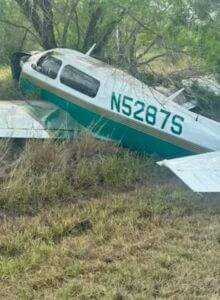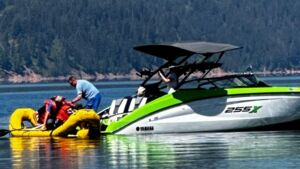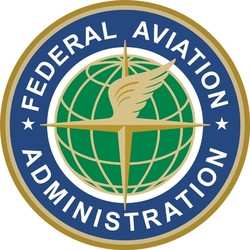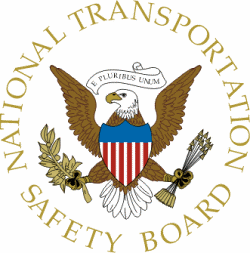We begin the month of July with the following stories...
Of note, an update to story of the murder of two firefighters and the shooting of a third in Coeur d’Alene, Idaho as well as the FAA release of Advisory Circular 150/5220-10F "Guide Specification for Aircraft Rescue and Fire Fighting (ARFF) Vehicles"
Here are the stories...
Be safe out there!
Tom
Plane Crash Reported at Kleberg County Airport – All Aboard Safe
KINGSVILLE, TEXAS - At approximately 9:45 a.m. this morning, the Kleberg County Sheriff’s Office responded to reports of a single-engine plane crash at the Kleberg County Airport.
a.m. this morning, the Kleberg County Sheriff’s Office responded to reports of a single-engine plane crash at the Kleberg County Airport.
Chief Deputy Jaime Garza confirmed that four individuals were on board the aircraft at the time of the incident. The pilot sustained minor injuries to the knee and back. The other three passengers were unharmed.
The Kleberg County Fire Department responded to the scene and assisted in securing the aircraft, including the safe removal of the plane’s battery.
The scene was then turned over to the Texas Department of Public Safety for further investigation.
No further details are available at this time.
https://southtexascommunitynews.com/stcn/plane-crash-kleberg-county-airport
Pilot rescued after plane crashes into Palisades Reservoir
LocalNew8
The following is a press release from the Bonneville County Sheriff's Office:
SWAN VALLEY, Idaho (KIFI) — Just after 11 am this morning, Bonneville County Sheriff’s Deputies and Star Valley Rescue were dispatched to the Palisades Reservoir near the Alpine Airport to a report of an airplane that went down in the water. A boater was able to get to the plane and rescue the pilot, who was the only one on board. The pilot was transported to the Star Valley Emergency Center but was not injured in the crash.
am this morning, Bonneville County Sheriff’s Deputies and Star Valley Rescue were dispatched to the Palisades Reservoir near the Alpine Airport to a report of an airplane that went down in the water. A boater was able to get to the plane and rescue the pilot, who was the only one on board. The pilot was transported to the Star Valley Emergency Center but was not injured in the crash.
The pilot told Deputies he was attempting to land at the airport and undershot the runway and could not maintain enough air speed before hitting the water. Deputies are working with the FAA and NTSB on the investigation, and removal of the plane will take place sometime in the next day or so. Deputies are asking boaters to stay clear of the plane and immediate area around it until it can be safely removed.
IDAHO SLAIN FIREFIGHTERS IDENTIFIED & UPDATES (The Secret List)
All,
In a news conference a few moments ago, it was announced that the following members gave their lives in the Line of Duty:
Battalion Chief John Morrison, 52, of the Coeur d’Alene Fire Department.
Coeur d’Alene Fire Department.
Battalion Chief Frank Harwood, 42, of Kootenai County Fire & Rescue.
Critically injured was Coeur d’Alene Fire Engineer Dave Tysdal, 47. He remains in the trauma center.
According to reports, the shooter actually spoke with the two arriving Battalion Chiefs -but only regarding to where his vehicle was parked-but gave no reason for the Chiefs to do anything but their jobs, in sizing up the incident. And then they were targeted with no chance of survival.
If you have not had a chance to listen, here is the audio. It is a valuable lesson for firefighters to learn, as it provides insight into how quickly this situation turned around. The Chiefs and Firefighters did exactly what any members would’ve done; you cannot predict a sniper.
They also stated during the news conference that area law enforcement will respond to all calls alongside the firefighters in the coming days, as a clear show of support.
Idaho Shooting Radio Traffic - https://drive.google.com/file/d/1Wh2RsCerQj_8q_ROpTFCd7Z4CO0nsIAw/view
Much more to follow. Our hearts go out to the two departments, the families, and all those affected by this evil act.
Take Care. Be Careful. Pass It On.
BillyG
The Secret List 6-30-2025-2205 Hours

The following advisory circular has recently been added/updated.
Document Information
Number - 150/5220-10F
Title - Guide Specification for Aircraft Rescue and Fire Fighting (ARFF) Vehicles
Status - Active
Date issued = 2025-06-26
Office of Primary Responsibility - AAS-300, Office of Airport Safety and Operations - Airport Safety & Operations Division
Description - This advisory circular provides guidance for preparing a specification that airports can use in procuring Aircraft Rescue and Fire Fighting (ARFF) vehicles.
Content - 150/5220-10F (PDF)

NTSB Final Report: Douglas A-4K
Pilot Applied Full Aft Stick And Nose-Up Trim, But The Airplane Remained On The Runway
Location: MCAS Cherry Point, North Carolina Accident Number: ERA23LA298
Date & Time: July 12, 2023, 14:00 Local Registration: N143EM
Aircraft: Douglas A-4K Aircraft Damage: Substantial
Defining Event: Runway excursion Injuries: 1 Serious
Flight Conducted Under: Public aircraft
Analysis: The pilot reported that a preflight inspection and flight control checks revealed no anomalies, and the pilot, maintenance personnel, and another pilot confirmed that the airplane was properly configured for takeoff. During the takeoff roll, as the pilot reduced forward stick pressure to rotate the airplane, he felt the nose strut extend; however, the airplane did not rotate. The pilot applied full aft stick and nose-up trim, but the airplane remained on the runway. As the airplane approached the end of the runway, the pilot chose to eject, and subsequently sustained serious injuries during the ejection and subsequent landing under parachute. The airplane departed the runway surface and continued an additional 3,000 ft through the runway overrun area, resulting in substantial damage from the impact and subsequent fire.
Postaccident examination of the airplane’s wreckage revealed that the horizontal stabilizer trim was at 0° (the normal takeoff setting was between 6° and 8° nose up) and the wing flaps were retracted. Examination and operational testing of the horizontal stabilizer actuator and trim components revealed no anomalies. Further examination of the airplane revealed that the front left throttle quadrant air-to-air refueling store control head cannon plug was loose. The cannon plug was resting against the horizontal stabilizer manual override push-pull rod end in a way that could limit operation. The cannon plug also showed evidence of severe chafing consistent with contact with the push-pull rod end. However, it is likely that the airplane’s manual trim override was working normally, since functional tests of both the normal horizontal stabilizer trim and manual trim override were part of the after engine start checks, and the pilot reported no anomalies.
Based on the available information, it could not be determined whether the trim system exhibited a runaway condition or if the pilot inadvertently actuated nose-down trim while holding the stick forward during the takeoff roll, as both situations would have presented the same to the pilot. According to the operator, a runaway nose-down trim condition during the takeoff roll was a known issue in the accident airplane make and model.
Regardless of the reason for the nose-down trim, the pilot should have recognized the airplane’s failure to rotate as a runaway nose-down trim scenario and immediately completed the associated emergency procedure, which included employing the manual trim override. The procedure likely would have resulted in the airplane becoming airborne, and thus preventing the accident.
Probable Cause and Findings: The National Transportation Safety Board determines the probable cause(s) of this accident to be -- The pilot’s failure to identify and appropriately respond to an anomalous nose-down trim condition during the takeoff roll, which resulted in his decision to eject and the airplane’s subsequent runway excursion.
FMI: www.ntsb.gov

Today in History
23 Years ago today: On 1 July 2002 Bashkirian Airlines flight 2937, a Tupolev Tu-154M, and DHL flight 611, a Boeing 757-200PF cargo plane, crashed following a mid-air collision near Überlingen, Germany. All 69 on board the Tu-154 and both crew members of the Boeing 757 were killed in the accident.
| Date: | Monday 1 July 2002 |
| Time: | 23:35 |
| Type: | Tupolev Tu-154M |
| Owner/operator: | Bashkirskie Avialinii |
| Registration: | RA-85816 |
| MSN: | 95A1006 |
| Year of manufacture: | 1995 |
| Total airframe hrs: | 10788 hours |
| Engine model: | Soloviev D-30KU-154-II |
| Fatalities: | Fatalities: 69 / Occupants: 69 |
| Other fatalities: | 2 |
| Aircraft damage: | Destroyed, written off |
| Category: | Accident |
| Location: | Überlingen - Germany |
| Phase: | En route |
| Nature: | Passenger - Non-Scheduled/charter/Air Taxi |
| Departure airport: | Moskva-Domodedovo Airport (DME/UUDD) |
| Destination airport: | Barcelona-El Prat Airport (BCN/LEBL) |
| Investigating agency: | BFU |
| Confidence Rating: | Accident investigation report completed and information captured |
Narrative:
Bashkirian Airlines flight 2937, a Tupolev Tu-154M, and DHL flight 611, a Boeing 757-200PF cargo plane, crashed following a mid-air collision near Überlingen, Germany. All 69 on board the Tu-154 and both crew members of the Boeing 757 were killed in the accident.
Bashkirian flight BTC2937 operated on a charter flight from Moscow (DME) to Barcelona (BCN), Spain. The aircraft departed Moscow at 18:48 UTC and climbed to the planned cruising altitude of FL360.
Five flight crew members were in the cockpit. The commander (under supervision) - who was the PF (Pilot flying) on this flight - occupied the left-hand seat. The right-hand seat was occupied by an instructor, who as a PNF (Pilot non flying) also conducted the radio communications. He was also the pilot-in-command (PIC). The seat of the flight navigator was between and slightly behind the pilots. The work station of the flight engineer was behind the instructor. A further pilot (copilot), who had no function on this flight, was on a vacant seat behind the commander.
DHL flight DHX611 departed from Bahrain 13:30 UTC on a cargo flight to Bergamo (BGY), Italy to Brussel (BRU), Belgium.
The flight landed at Bergamo Airport at 19:10 UTC. The airplane was refuelled, unloaded and reloaded with cargo. Take-off for the last leg to Brussels was at 21:06 UTC. The airplane was flown by the copilot (PF).
At 21:21 flight DHX611 contacted ACC Zurich, and received clearance to climb to FL320 and subsequently to the planned cruising altitude of FL360. At 21:29 the airplane reached this flight level, without the pilots reporting it.
At 21:30 flight BTC2937 contacted ACC Zurich, and reported they were at FL360.
From about 21:33 a discussed ensued among the crew on the Tu-154 concerning an airplane approaching from the left which was displayed on the vertical speed indicator (VSI/TRA) which is part of the TCAS. The crew strived to localize the other airplane as to its position and its flight level.
Meanwhile, on board DHX611, the copilot had handed over the control of the airplane to the PIC in order to go to the lavatory. At 21:34:31 the PIC confirmed that he had taken over.
At 21:34:42 the airborne TCAS on board both flights alarmed the crews about possibly conflicting traffic by a Traffic Advisory (TA): traffic, traffic".
Seven seconds later the radar controller issued descent instructions to flight 2937: "Descend flight level 350, expedite, I have crossing traffic". This descent was necessary for continuation of the flight to Barcelona and to achieve a vertical separation with respect to the approaching DHL Boeing 757.
At 23:42:56 the crews of both aircraft received a Resolution Advisory (RA)-command from their TCAS. The DHL crew complied with this and initiate a descent. At the same time the Tupolev crew were trying to deal with the conflicting descent (by ATC) and climb (TCAS) instructions. Seven seconds after the Resolution Advisory-command, the ACC Zurich controller repeated the instruction to descend. The Bashkirian crew then decided to follow the controller's instructions. A little later the TCAS aboard the Boeing 757 gave the crew a Resolution Advisory to "increase descent". At that time the First Officer had returned to his seat.
They then contacted ATC, reporting that they were doing a TCAS descent.
Since both aircraft were descending, the TCAS of the Russian plane warned the crew to "increase climb" to avoid a collision. This was eight seconds before the collision. Just prior to the collision, both crews detected the other aircraft, and reacted to avoid the collision by attempting appropriate flight manoeuvres. Nevertheless, at 23:35:32 both aircraft collided at approximately FL354. The tail fin of the Boeing 757 struck the left side of the Tupolev 154 fuselage near both overwing emergency exits, while the Tupolev's left wing sheared off 80% of the Boeing's tail fin. The Tupolev immediately broke up in four pieces (left wing, right wing, main fuselage and tail unit including the engines). The Boeing 757 lost control and crashed 8 km north of the Tupolev, just after losing both engines.
At the night of the accident, from 21:00 UTC, the configuration of the radar data processing of ACC Zurich was modified in order to re-arrange the control sectors.
During this time the radar system was operated in the "fallback mode" and the separation minimum had been increased from 5 to 7 NM. In doing so the MV9800 radar computer was not available to the controllers, therefore no automatic correlation of the flight targets was possible and the optical STCA (Short Term Conflict Alert) was not displayed anymore.
After the air traffic flow had decreased one controller retired to rest at about 21:15.
From then on one controller was solely responsible for the entire ATC within ACC Zurich. For this he had to fill two adjacent workstations with different frequencies and worked with two radar monitors. In order to control flights in the upper airspace and the approach in the lower airspace to Friedrichshafen. During the last five minutes prior to the collision, the controller paid more attention to the
Airbus A320 in approach to Friedrichshafen.
At 21:33:24 the radar controller of UAC Karlsruhe was alerted by his STCA of the conflict situation. His attempts to warn the controller of ACC Zurich by phone were not successful as a telephone connection could not be established.
A Russian man who had lost his family in the accident held the controller responsible and killed him at his home in Kloten, near Zürich, on 24 February 2004.
CAUSES: The following immediate causes have been identified:
- The imminent separation infringement was not noticed by ATC in time. The instruction for the TU154M to descend was given at a time when the prescribed separation to the B757-200 could not be ensured anymore.
- The TU154M crew followed the ATC instruction to descend and continued to do so even after TCAS advised them to climb. This manoeuvre was performed contrary to the generated TCAS RA.
The following systemic causes have been identified:
- The integration of ACAS/TCAS II into the system aviation was insufficient and did not correspond in all points with the system philosophy.
The regulations concerning ACAS/TCAS published by ICAO and as a result the regulations of national aviation authorities, operational and procedural instructions of the TCAS manufacturer and the operators were not standardised, incomplete and partially contradictory.
- Management and quality assurance of the air navigation service company did not ensure that during the night all open workstations were continuously staffed by controllers.
- Management and quality assurance of the air navigation service company tolerated for years that during times of low traffic flow at night only one controller worked and the other one retired to rest.
